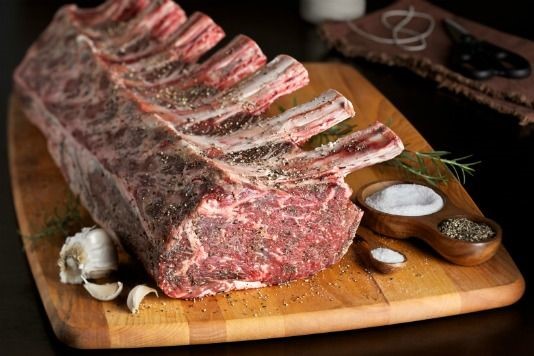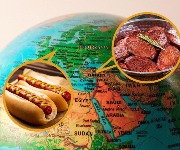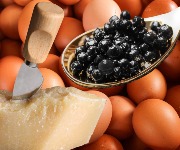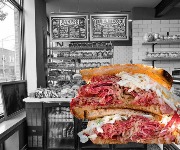The loveFOOD guide to... beef

Here’s our guide to some of the most popular beef cuts you’ll find in most butchers and supermarkets.
Sirloin
Generally regarded as the best steak money can buy, its name comes from the French for ‘on the loin’; not, as you may have read elsewhere, from steak being knighted ('sir') by James I. It has a thick rind of fat running down one side. Our top tip when cooking sirloin on a griddle pan is to place that fatty edge onto the bars first to get it going, and render out some of that fat. A good dry-aged well-hung sirloin is a thing of beauty.
Sirloin of beef and braised oxtail recipe
Fillet steak
The fillet is the most tender part of any animal, as it’s a muscle that doesn’t really do any work. There also isn’t very much of it (about 500g per cow), so fillet tends to be the most expensive steak. If you like beef soft and yielding, then this is the cut for you. Just don’t overcook it.
José Pizarro's Fillet steak on toast with onions and melted cheese
Hanger steak
Also known as onglet, this steak comes from the diaphragm on the underside of the animal. It has bags of beefy flavour, but you need to cook it rare, and quickly too, otherwise it’ll toughen up. Compared to other steaks it’s still quite cheap; indeed another name for it is 'butcher’s steak', as it’s the one the butcher normally took home.
Hanger steak with sweet potato mash recipe
Rib-eye steak
Another tender steak that, as the name suggests, comes from the top of the prime rib of the animal. It has a good marbling of fat running through it, giving excellent flavour when cooked. Like hanger steak it’s great for quick, fast cooking but, again, don’t overcook it.
Jamie Oliver's rib-eye stir-fry with dan dan noodles recipe
Topside & silverside
The most commonly available roasting joint, topside (and indeed silverside) are both taken from the hind quarter of the animal. Topside is very lean, and often comes with a separate piece of fat tied around it to help keep it moist. Silveside is slightly tougher than topside, but both are great slow-roasted, or pot-roasted in a small amount of sauce or liquid.
Horseradish and sugar crusted beef recipe
Cold rare roast beef with dill and mustard
Braising steak
A catch-all term that describes meat from several places at the front of the animal, these small cubes of meat are best used in stews, curries and casseroles. Cooking them in liquid at a low temperature for a long time makes them meltingly tender.
The Hairy Bikers' superb steak and ale pie recipe
Mince
Mince used to be off cuts and leftover bits, but now it’s made up of joints like silverside and braising steak (read our review of popular brands here). Coarse minced beef holds together better in cooking, while finely minced beef is better for shaping into burgers and meatballs. If you really don’t trust the shops, you could always buy whole joints and mince your own.
Heston Blumenthal's traditional minced beef and dumplings recipe
Jacob’s ladder (beef short ribs)
Barbecue- and American-style cooking have helped put ribs back on many a butcher’s counter, and with good reason. They can take marinades, smoking, slow cooking, and the grill. If spicy barbecue sauces aren’t your thing, you can braise in red wine, stock, or even beer, to get that melting, gelatinous finish.
Beef short rib and onion cottage pie recipe
Gary Kingshott's skirt of beef
Most Recent
Comments
Be the first to comment
Do you want to comment on this article? You need to be signed in for this feature








